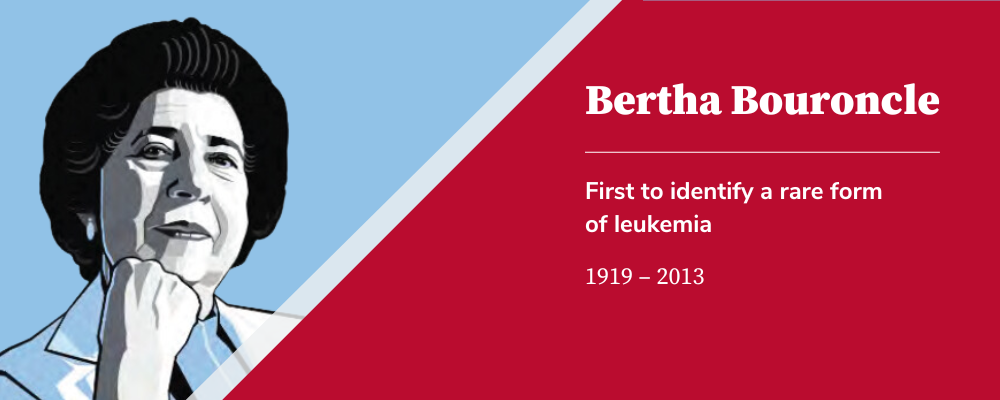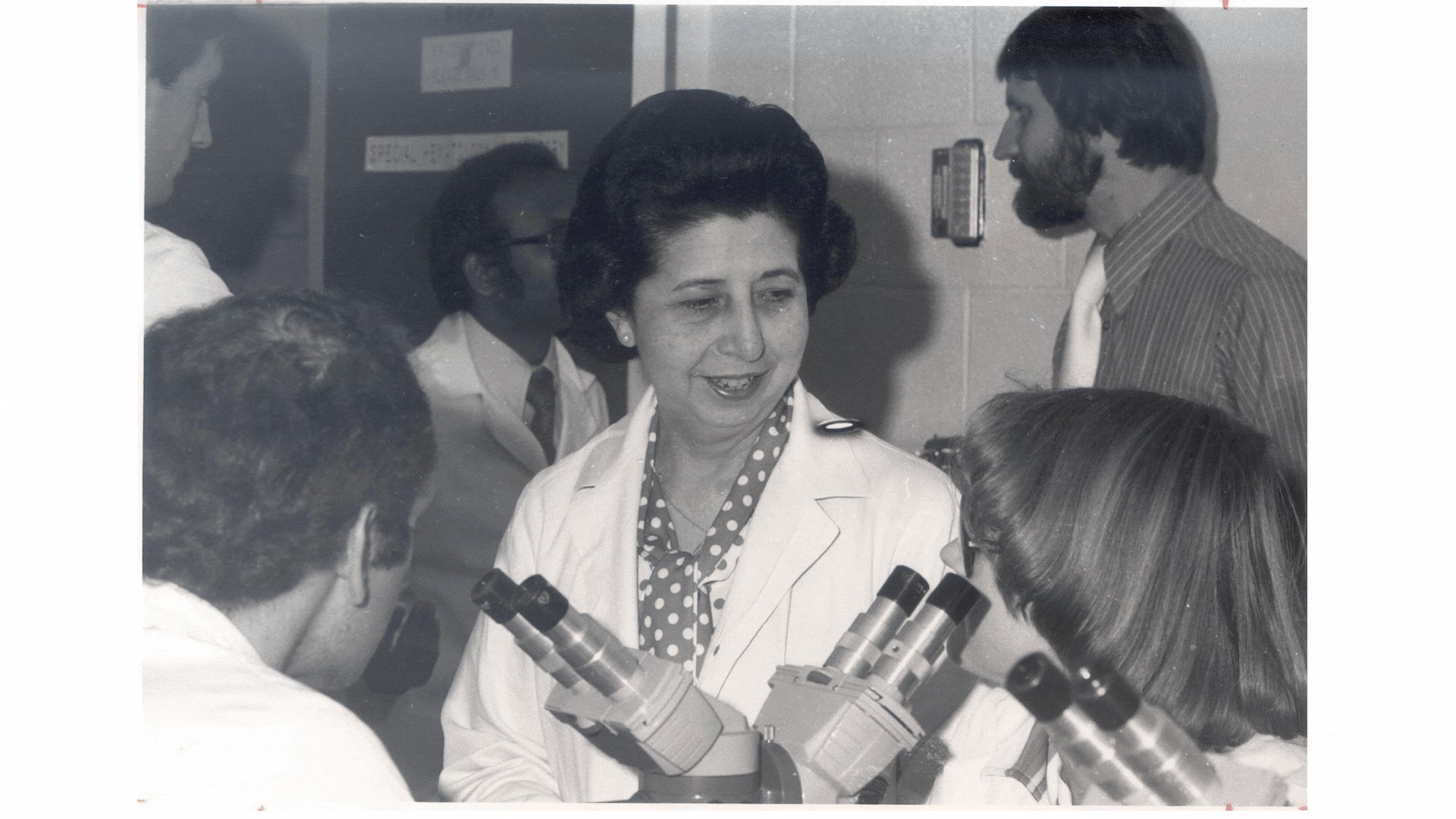Contact Us

Medical Heritage Center
(614) 292-3275

Bertha A. Bouroncle, MD (1919 – 2013) was internationally renowned for her research and clinical work involving patients with hematologic malignancies. In a landmark paper published in 1958 in the medical journal Blood, she and co-authors Bruce Wiseman, MD, and Charles Doan, MD, first identified a rare form of chronic leukemia (initially called leukemic reticuloendotheliosis) that later became known as hairy cell leukemia (HCL) because the ragged edges of the malignant cells resemble hair-like projections under the microscope. Her paper is still widely regarded as a substantial accomplishment in the field of clinical research.
While attending medical school at San Marcos National University, Bouroncle worked in a hematology research laboratory and developed a love for the discipline. Originally from Peru, she finished first in her medical class in 1948 and won a scholarship for one year of study in the United States. Bouroncle chose The Ohio State University because the faculty included Drs. Doan and Wiseman, both renowned hematologists.
After completing her clinical fellowship, Bouroncle remained at Ohio State as a resident in internal medicine and a fellow in hematology. From 1953 to 1954, she served as the first female chief resident at the university, then joined the medical faculty as an assistant professor in hematology/oncology. She was promoted to associate professor in 1957 and to full professor in 1970, a position she held until becoming professor emerita in 1989.
In the 1980s, Bouroncle and two other physicians, Drs. Michael Grever and Eric Kraut, worked as a team to develop a purine nucleoside analog called deoxycoformycin, or pentostatin. Pentostatin remains an effective therapy for HCL that has helped transform this once fatal disease into one of the most treatable cancers, enabling patients to lead a relatively normal life span. This achievement, along with work by many other investigators across the globe, has changed the natural history of HCL.
Bouroncle received many awards throughout her career, including: Department of Internal Medicine Earl N. Metz Distinguished Physician Award, 1999; special recognition in patient care, teaching and research, 1986; College of Medicine senior class teaching award,1986, 1977, 1976, 1975, 1974; Teacher of the Year, 1984; Professor of the Year, 1979; Honorary Member of the Class of 1979; Ohio State Faculty Merit Teaching Award, 1978; AOA Faculty Member of the Year, 1973. In addition, the Bertha Bouroncle Distinguished Lecture Award was established in 2001.
Bouroncle’s hometown was Trujillo, Peru. Her parents, Dr. Luis H. Bouroncle and Carmela Bouroncle Gonzalez-Quint, were Harvard-educated. She was the fourth of five children; her siblings were Luis, Consuelo, Maruja and Antonio. Bouroncle also gave back to the community through the creation of the Bertha Bouroncle, MD, and Andrew Pereny Chair of Medicine to fund cancer research at Ohio State.
Bertha A. Bouroncle, MD Papers, Spec.201505.Bouroncle, Medical Heritage Center, Health Sciences Library, The Ohio State University.
Bouroncle, Bertha A., Bruce K. Wiseman, and Charles A. Doan. “Leukemic Reticuloendotheliosis.” Blood 13, no. 7 (July 1958): 609-30.
